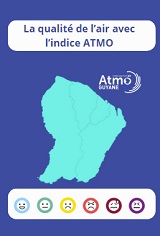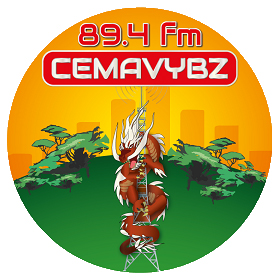Blada.com
mardi 08 juillet
Boîtes aux lettres
Courrier des lecteurs
Petites annonces
Emploi / Formation
Covoiturage
Infos citoyennes
Infos citoyennes
20/05/21
Une offre de soins en aval de l’hôpital pour décharger les établissements de santé
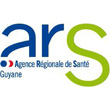
Depuis lundi, quatre patients atteints de Covid-19, encore contagieux mais ne pouvant s’isoler chez eux, sont pris en charge dans une « structure d’aval hospitalier », géré par le GCSMS. Ce dispositif, déjà déployé durant la première vague, sera réactivé également à Kourou et Saint-Laurent du Maroni. Il permet aux établissements de libérer des lits occupés par des patients qui n’ont plus besoin d’être hospitalisés mais qui y seraient restés, faute de pouvoir rentrer chez eux.
Il est 19 heures et c’est l’heure du repas, dans un appartement de la cité Eau Lisette, à Cayenne. Les repas sont fournis par l'entreprise adaptée Yepi Chwit. Ce mercredi soir, c’est pizza. « C’est Noël », lance un patient. Comme ses trois « colocataires » temporaires, il est sorti de l’unité des maladies infectieuses et tropicales (Umit) de l’hôpital de Cayenne, où il était hospitalisé pour Covid-19. Dès que ce sera possible, il rentrera chez lui. En attendant, il a quitté l’hôpital et est hébergé, pour une durée indéterminée, dans cet appartement géré par le Groupement de coordination sociale et médico-sociale (GCSMS-Epnak). Matin et soir, il y reçoit la visite d’une infirmière de l’hospitalisation à domicile (HAD) Rainbow. Mais aussi ses repas. Et un aide-soignant est présent pour accompagner les patients, assurer la prise des médicaments et faire le lien avec l’infirmière si besoin. D’abord ceux du CHC jusqu’à hier et désormais ceux recrutés par le GCSMS.
Ce n’est pas la première fois que des solutions d’aval hospitalier sont mises en place en Guyane. Le but : libérer des lits dans les hôpitaux, qui connaissent une forte tension en raison des nombreuses contaminations au Covid-19. L’an dernier, durant la première vague, de tels dispositifs ont été mis en œuvre à l’Itep de Roura, au domaine du Lac bleu à Saint-Laurent du Maroni, ou encore à l’hôtel Mercure de Kourou. « Nous avions apprécié ce dispositif », témoignait fin avril le Pr Félix Djossou, chef de l’Umit à l’hôpital de Cayenne et directeur médical de crise du groupement hospitalier de territoire.
A la différence de la première vague, les établissements médico-sociaux restent ouverts, malgré la reprise épidémique. L’ARS a donc sollicité le GCSMS pour organiser cet aval hospitalier. La semaine dernière, quand les hospitalisations ont grimpé en flèche, la nécessité du dispositif s’est fait plus pressante. « Vendredi, nous avons visité des structures hôtelières, mais c’est une solution en appartement qui a été retenue, pour des raisons d’accessibilité notamment », relate Christophe Pierre, qui dirige la structure. Ces appartements, le GCSMS les destinait à l’accueil de personnes handicapées des communes de l’intérieur, à partir du mois de septembre. « Ils étaient encore vides. Il a fallu acheter des meubles en urgence, chaises, tables, sommiers en kit. On a commencé à travailler à 7 heures et on a terminé à 3 heures du matin », témoigne Christophe Pierre. Lundi, quatre premiers patients ont pu sortir de l’hôpital et s’installer dans l’appartement.
« Ce sont des patients encore contagieux, qui ne peuvent pas s’isoler chez eux à cause de la configuration du logement, ou qui ont un problème d’autonomie, ou qui vivent seuls et sont sous oxygénothérapie », explique Christophe Pierre. Deux d’entre eux ont appris qu’ils allaient pouvoir rentrer chez eux aujourd’hui ou demain : une dame âgée de Tonnégrande et un habitant de Rémire-Montjoly. Une satisfaction, après avoir passé une semaine chacun à l’Umit, plus encore quelques jours dans l’appartement. Tous disent tout de même que cette solution est « une bonne chose ».
Pour un troisième patient, vivant à Cayenne, le retour à la maison ne sera pas pour tout de suite. « Quand je suis tombé malade, j’ai attendu quatre ou cinq jours. C’est quand je n’ai plus pu mettre un pied devant l’autre, que j’ai appelé un ami infirmier libéral. Il a appelé le 15 tout de suite. Les pompiers sont venus me chercher. » Sa saturation en oxygène était en chute libre. « Chaque corps réagit différemment. J’ai fait une fibrose après avoir été infecté. Un autre a fait une thrombose. » Dans l’appartement, il est encore sous concentrateur d’oxygène.
Dans les prochaines semaines, le GCSMS va augmenter les capacités d’accueil de patients sortis de l’hôpital. A Kourou, il pilotera un dispositif similaire très prochainement. A Saint-Laurent du Maroni, le Centre Hospitalier organise son aval lui-même, dans l’ancien service de soins de suite et de réadaptation, en centre-ville.
Since Monday, four patients with Covid-19, still contagious but unable to isolate themselves at home, have been cared for in a "hospital downstream structure", managed by the GCSMS. This device, already deployed during the first wave, will also be reactivated in Kourou and Saint-Laurent du Maroni. It allows establishments to free up beds occupied by patients who no longer need to be hospitalized but who would have stayed there because they could not return home.
It is 7 pm and it is time for the meal, in an apartment in the city of Eau Lisette, in Cayenne. Meals are provided by the adapted company Yepi Chwit. This Wednesday night is pizza. "It's Christmas," says a patient. Like his three temporary "roommates", he was released from the Infectious and Tropical Diseases (Umit) unit at Cayenne Hospital, where he was hospitalized for Covid-19. As soon as possible, he will go home. In the meantime, he has left the hospital and is staying, for an indefinite period, in this apartment managed by the Social and Medico-Social Coordination Group (GCSMS-Epnak). Morning and evening, he receives a visit from a hospital at home nurse (HAD) Rainbow. But also his meals. And a nursing assistant is on hand to accompany patients, ensure medication is taken and liaise with the nurse if necessary. First those from CHC until yesterday and now those recruited by GCSMS.
This is not the first time that downstream hospital solutions have been implemented in French Guiana. The goal: to free up beds in hospitals, which are under high tension due to the numerous Covid-19 contaminations. Last year, during the first wave, such devices were implemented at the Itep in Roura, at the Domaine du Lac Bleu in Saint-Laurent du Maroni, and at the Mercure hotel in Kourou. "We appreciated this device," said Professor Félix Djossou, head of Umit at Cayenne hospital and emergency medical director of the regional hospital group, testified at the end of April.
Unlike the first wave, the medico-social establishments remain open, despite the epidemic resumption. The ARS therefore asked the GCSMS to organize this hospital endorsement. Last week, when hospital admissions skyrocketed, the need for the device became more pressing. "On Friday, we visited hotel structures, but it was an apartment solution that was chosen, for accessibility reasons in particular," says Christophe Pierre, who heads the structure. These apartments, the GCSMS intended for the reception of disabled people from the municipalities of the interior, from September. “They were still empty. We had to buy emergency furniture, chairs, tables, box springs in kit form. We started working at 7 am and finished at 3 am”, testifies Christophe Pierre. On Monday, the first four patients were able to leave the hospital and move into the apartment.
"These are patients who are still contagious, who cannot isolate themselves at home because of the configuration of the accommodation, or who have a problem with autonomy, or who live alone and are on oxygen therapy," explains Christophe Pierre. Two of them have learned that they will be able to return home today or tomorrow: an elderly lady from Tonnégrande and a resident of Rémire-Montjoly. Satisfaction after spending a week each at Umit, plus a few more days in the apartment. All the same, all say that this solution is "a good thing".
For a third patient, living in Cayenne, the return home will not be immediately. “When I got sick, I waited four or five days. It was when I couldn't put one foot in front of the other that I called a Liberal nurse friend. He called the 15th right away. The firefighters came to get me. "His oxygen saturation was in free fall. “Every body reacts differently. I got fibrosis after getting infected. Another had a thrombosis." In the apartment, he's still on an oxygen concentrator.
In the coming weeks, the GCSMS will increase the reception capacity of patients discharged from the hospital. In Kourou, he will pilot a similar device very soon. In Saint-Laurent du Maroni, the Hospital Center organizes its downstream itself, in the former follow-up care and rehabilitation service in the city center.
Raccourcis
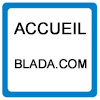
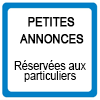
passer une petite annonce
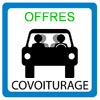
passer une annonce de covoiturage
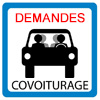
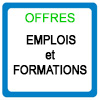
passer une annonce d’emploi
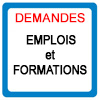
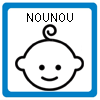
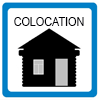
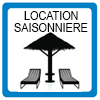
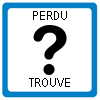
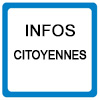
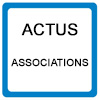
associations, postez vos actualités
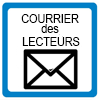
participez au courrier des lecteurs
La Guyane c’est ici
La qualité de l’Air avec
ATMO
Photothèque

Lancements 2022
Vol 259 Ariane 5



